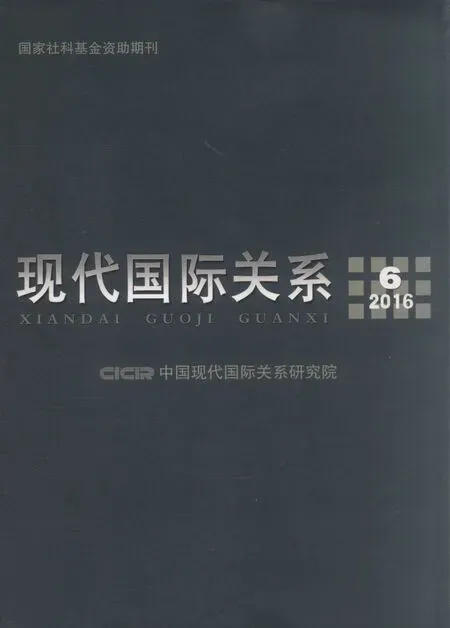Abstracts
s
RMB’s Inclusion in SDR and the Future of International Monetary System
LiJunjiu&JiangMozhu
Abstract: RMB’s inclusion in SDR is the outcome of the rise of emerging powers, it reflects China’s demand for multifold interests. RMB’s inclusion in SDR will lead to the multipolarization of international monetary system. This process, however, is not rapid. Furthermore, this multipolarization is not one of the coexistence of dollar, euro, and Renminbi endowed with equal qualities. It will probably be an international monetary framework with the characteristics of “one super currency” (dollar), “two strong currencies” (the euro and Renminbi), and “two small currencies” (the Pound Sterling and Japanese yen). In order to promote the multipolarization of international monetary system, China needs to properly position its role in the international society, widely seek profound consensus of reforming the international monetary system, and participating in supplying international public goods.
Renminbi, SDR, International Monetary System, Multipolarization
New Trend of the Geopolitics in Central and Eastern Europe
ZhangJian
Abstract: Central and Eastern Europe (CEE) has long been the arena for big powers to fight for sphere of influence. Recently, it has again been a geopolitical hot spot, where a fierce game is going on among the US, Russia, Europe and CEE countries. The US tries to use CEE as a geopolitical tool to contain Russia, control Europe and exert influence on the development of EU-Russian relationship. Russia combines both toughness and tolerance, endeavouring to prevent the emergence of a united “anti-Russian front”, maintaining the CEE role as a buffer zone between Russia and the West, and safeguarding the traditional Russian influence. The EU has been weakened, thus losing some control over CEE countries, suffering from accumulated worries about external intervention, especially Russian “penetration”, so it is fighting hard for its leading role in the CEE region. As for CEE countries, they are still positioned on the political battlefield among the EU, US and Russia. However, they are turning to be proactive geopolitical players. It is remarkable that they changed what we used to call “Lean to one side”, and demonstrated a diversified and pragmatic foreign policy, which expanded their autonomy.
Keywords: Central and Eastern Europe, geopolitical politics, EU, US, Russia
The Difficulties and Prospect of Serbian Transition
ChenYang,Wunan&LiJun
Abstract: Serbia has passed through the disintegration of Yugoslavia and a severe civil war, and then was bombed by NATO due to Kosovo issue, thus being isolated in Europe for a long time. Compared to other Central and Eastern European Countries, Serbia started the transition quite late, gained limited results and was trapped in difficulties. The complexity and difficulty of Serbian transition process are rooted in its unique historical experience, geographical situation and social development. It’s a “Hasty March” with multiple tasks to fulfill. Aiming at state rebuilding and national rejuvenation, it not only has to complete the double-transition in the economic and political fields, but also to deal with the issues of both national construction and European Union’s identity, which is destined to experience twists and turns. However, what the Serbian transition faces is just a deadlock instead of a dead end. Although the process of Serbian transition would not go smoothly all the way, neither would it be completely gloomy, it could have a relative bright future.
Keywords: Serbia Transition Prospect
An Analysis of Poland’s “New Development Model”
LiJun,WangYuanyuan&LiuChen
Abstract: Since Poland’s new right-wing government took office last year, its leaders launched a series of major initiatives in the political, economic and social fields, including challenging the Western political tradition, such as separation of powers and the principle of checks and balances, strengthening government control, changing the liberal market economy model, and emphasizing “fair, welfare and sustainable development”. The implementation of the new development model is not only decided by the ruling party’s ideology, but also related to various difficulties faced by the EU and the changes in Poland’s economic and social situations. Poland’s new government wants to find a new path of development, but their new development model doesn’t meet the Western norms and will inevitably have a great impact on both the EU and Central and Eastern Europe. In the near future, a sudden change of the new government’s policies is unlikely to occur.
Keywords: Poland, Central and Eastern Europe, European Union
On the Changes in Poland’s Foreign Relations and the Opportunities and Challenges in China-Poland Relations
MaoYinhui
Abstract: Soon after winning the parliament elections in Poland in October 2015, the “Law and Justice” Party (PiS) took power. A series of changes have taken place in Poland’s foreign policies. It relations with the EU become tenser due to the “democracy” issue. It keeps close ties with the UK, but alienates itself from France and Germany. It takes an increasingly tough attitude towards Russia and relies more on the U.S and NATO for its security. At the same time, Polish policy toward China is getting more active, and the China-Poland strategic cooperation has entered a new era. Poland actively responds to China’s One Belt and One Road Initiative and will play an important role in it.
Keywords: Law and Justice, Poland’s foreign relations, Euroscepticism, One Belt One Road
(Edited by Zhao Jinfu)

